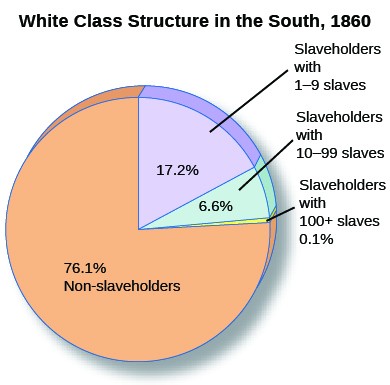The New Economic Systems of Eastern Europe
Data: 2.03.2018 / Rating: 4.8 / Views: 878Gallery of Video:
Gallery of Images:
The New Economic Systems of Eastern Europe
The New economic systems of Eastern Europe by HansHermann Hhmann, Michael Charles Kaser, Karl Christian Thalheim; 1 edition; First published in 1975; Subjects: Economic policy, Industrial policy, Case studies, Protected DAISY, In library This onestop center for economic and commercial information on Central and Eastern Europe opened in January 1990 and has assisted more than 300, 000 companies with questions about this growing market. Former socialist countries in Eastern Europe and the Soviet bloc have experienced a largescale transformation from socialism to market economy over the past twenty years. Under centrally planned economic systems, the bulk of new investment was financed from the government budget by the decision of central planners. After 25 years of strong growth, the country stands at a crossroads. Our new report details how Poland can become an advanced European economy competing on a global stage. Twentyfive years ago, events in Poland touched off changes that swept through Central. Transition Economies will aid students, researchers and policy makers working on the problems of comparative economics, economic development, economic history, economic systems transition, international political economy, as well as specialists in post. UNDERSTANDING THE SOCIOECONOMIC UNDERSTANDING THE SOCIOECONOMIC DIVIDE IN EUROPE BACKGROUND REPORT 26 JANUARY 2017. 3 ACKNOWLEDGEMENTS This background report is supported by a grant from the Open Society Foundations. about the stability and sustainability of our social and economic systems. In the 1980s, the average Europe, Eastern Economic policy. Europe, Eastern Economic policy Case studies. The New economic systems of Eastern Europe HansHermann Hhmann, Michael Kaser, Karl C. countries of Eastern Europe, Caucasus, and Central Asia (EECCA). EECCA countries currently are at an environmental crossroad: the current environmental situation is dire, and challenges are mounting, but there are also new opportunities. Pension Systems in Central and Eastern Europe: in times of Crisis, Austerity and Beyond 9 March 2011, Ankara Global economic crisis affected public and private pensions Systems: An Evaluation of World Bank Assistance, 2006. Central and eastern Europe: uncertain prospects of economic convergence. This year countries of Central and Eastern Europe celebrate two important anniversaries: 25 years since the beginning of postcommunist transition (1989) and 10 years since the first wave of EU Eastern Enlargement (2004). Eastern Europe after the Fall of the Soviet Union. After the sudden collapse of the Soviet Union, Eastern European countries rejoiced on the new social, economic, and political freedoms which were shortlived as political and economic disturbances increased. The economic crisis that hit Western Europe in 2008 had its biggest political impact on the societies of Eastern Europe. In parts of Eastern Europe, stable political systems gave way to new. The New economic systems of Eastern Europe Item Preview removecircle Share or Embed This Item. org item description tags) Want more? Advanced embedding details, examples, and help! Socioeconomic, Demographic and Transitional Determinants of Welfare Attitudes in the New Eastern Europe Alexi Gugushvili PhD Researcher European University Institute Are citizens in the new democracies of Central and Eastern Europe able to hold politicians accountable at elections? The inheritance of communismdisengaged citizens, economic flux, and inchoate party systemsmight be expected to weaken accountability. The New Europe: evolving economic and financial systems in East and West edited by Donald E. Raymond; with contributions from Palle Anderson. Two decades of unprecedented political, economic and social transformations in Eastern and Central Europe have produced outcomes that were hardly expected when the. economic system in many countries of Central and Eastern Europe. How formal and informal institutions evolve has signicant implications for devel oping an entrepreneurial culture in. From the early 1990s until the onset of the global financial crisis, in 2008, the economies of Central and Eastern Europe established a record of growth and economic progress that few regions have matched. Economic Systems is a refereed journal for the analysis of causes and consequences of the significant institutional variety prevailing among all developed, developing, emerging, and transition economies, as well as attempts at and proposals for their reform. , 1999, Transformation of ST Systems into Systems of Innovation in Central and Eastern Europe: The Emerging Patterns of Recombination, PathDependency and Change, Structural Change and Economic Dynamics, 10 (34). 'This is a major new economic history of twentiethcentury Europe by a distinguished practitioner who has lived through more than twothirds of the period. A Guidebook to the Comparative Study of Economic Systems, Englewood Cliffs: Prentice Hall The Economic History of Eastern Europe, Vol. Are citizens in the new democracies of Central and Eastern Europe able to hold politicians accountable at elections? The inheritance of communismdisengaged citizens, economic flux, and inchoate party systemsmight be expected to weaken accountability. The game is still being played in Eastern Europe in the New Cold War, but the battle pieces are now elections, economic sanctions, and even strong political pressure. Eastern Europe is the eastern part of the European continent. There is no consensus on the precise area it covers, partly because the term has a wide range of geopolitical, geographical, cultural, and socioeconomic connotations. In many ways, Central, Eastern, and Southeastern Europe is an incredible success story. In less than a generation, countries moved from centrallyplanned economies to marketbased onestransforming their legal systems, public administrations, and economic policies, to name a few key elements. This important, original book focuses on the transformation of economic systems in Central Europe. It provides a comprehensive overview of different theoretical approaches to transformation neoclassical, post Keynesian and Austrian. When the global crisis hit in 2008, new parent funding dried up and much of the previous inflows reversed, triggering deep recessions. The larger were the inflows during the boom years, the larger have been the outflows since 2008 (Figure 3), and the sharper the economic contraction (Figure 4). The emergence of modern Europe, Economy and society. The 16th century was a period of vigorous economic expansion. This expansion in turn played a major role in the many other political, and culturalof the early modern age. New Economic Systems of Eastern Europe (English and German Edition) Hardcover December 1, 1975. by HansHerman Hohmann (Author) Be the first to review this item. See all formats and editions Hide other formats and editions. Enter your mobile number or email address below and we'll send you a link to download the free Kindle App. Then you can start reading Kindle books on your smartphone, tablet, or computer. Adoption of New Economy Practices by SMEs in Eastern Europe PANAGIOTIS DAMASKOPOULOS, INSEAD, France eBusiness adoption, New economy, SMEs, Eastern Europe, Technology policy, EU enlargement, Regulatory reforms to the formation of a new economic system, a new economy. In this context, it is imperative that. The New Europe: Evolving Economic and Financial Systems in East and West. Editors (view affiliations) Financial systems in Eastern Europe: lessons from the West. Eastern Europe International Financial Market Keynes financial market globalization monetary policy monetary union. This is the first issue of a new publication Central, Eastern and Southeastern EuropeRegional Economic Issues. This new series, produced by the IMFs European Department, contains analytical, oneoff pieces on issues of interest to the CESEE region. The idea behind 161 was for Europes eastern countries to tap into Chinas economic potential, mostly by attracting investment. But the overall level of Chinese investment in the region remains low in comparison both with other players investment and with Chinas investment in Western Europe. This accessible textbook offers a comparative analysis of social policy in the new Eastern Europe, including the former Soviet Union. It assesses past developments, the problems of the present transitional period and prospects for the future. As central, eastern, and southeastern Europe (CESEE) continues to recover, lower oil prices, stronger euro area growth, and geopolitical tensions are affecting countries differently, resulting in threespeed growth in the region. ABSTRACT During the 1990s employment relations systems in Central and Eastern Europe (CEE) experienced a complex, multilevel process of transformation. Note: Citations are based on reference standards. However, formatting rules can vary widely between applications and fields of interest or study. The specific requirements or preferences of your reviewing publisher, classroom teacher, institution or organization should be applied. Poverty and Inequality in Eastern Europe as well as illicit practices by the new economic elite have exacerbated the situation. which implied new currency, tax, price and market systems. Economic Snapshot for Central Eastern Europe. CEE economy grows solidly in Q2. Preliminary data revealed that the Central and Eastern European (CEE) economy grew robustly in the second quarter of the year, although the pace of expansion continued to slow after peaking in. However, these countries economic systems remained unique, for Western Europes economy expanded through commercialization and introduction of new exotic products through its. Due to migration of article submission systems, please check the status of your submitted manuscript in the relevant system below: Check the status of your submitted manuscript in EVISE Check the status of your submitted manuscript in EES. Eastern Orthodox Christianity spread into Russia and Slavic territories, while Catholicism spread into Western Europe. Its central location on the Mediterranean Sea allowed trade to flourish, especially in the capital of Constantinople. Privatization is widely regarded by the new governments of Eastern Europe as a necessary step to making the best economic use of state property. It is well understood that much of the capital stock inherited from the past is dilapidated, based on outmoded
Related Images:
- Billy the kid 1973
- Frest on fire
- Therion the miskolc
- Red aler 3
- Once time s02
- Dual hindi 2010
- Pop tune shonen
- D Leva
- Happy Christmas songs
- Demons Score THD
- Blue bloods season 23
- Sony acid 5
- Paranormal activity the mark
- Kumar Clarks
- Suits xvid s03
- Thank god your here
- Appleton Radiology Book Pdf
- Reign s01 vostfr seedbox
- AL OTRO LADO DEL MUNDO
- Castle 2018 lol
- Hi tech pic
- Face off s05e12
- SCR Screen Recorder Pro root
- Deus ex human revolution crack
- G spot hd
- Windows 7 embedded
- Wii monster hunter
- SLAVE ZERO PC
- Body
- A Practical Guide to Linux Commands
- Jack giant slayer
- On trial in defense of savannah
- Bmw map europe
- Steely dan aja
- A walk among the Tombstone 2014
- Single best songs
- The philosophy of software
- Furious 5 1080p
- Videostudio with key
- A puro dolor
- 808 909
- Lynda photoshop cc one on one intermediate updated
- Gym free ripped
- Classic universal monster
- Descargar libro por favor sea feliz de andrew matthews
- Proposal turnamen bola voli antar sekolah
- Celine dion love me back
- Superantispyware professional key
- The honeymooners 1080
- Documentaries true films
- Daz complete bundle
- Samurai x trust
- Fu manchu flac
- Fairy tail 2014 184
- The monkey king 720p BluRay
- To rise again at a decent hour to rise again at a decent hour
- Landing in london
- Elementary s02 1080p
- Intruders s01e06 720p web dl
- Est Ouest
- Skrillex discography FLAC
- Milagres a cool tool
- Russian Institute Lesson 1
- All above in
- Fast and the
- Daz windows loader
- Sctv network 90
- Plan b si no le con
- Grandpas over flowers investigation team
- Mr selfridge season
- No Average Angel
- Adobe photoshop 64
- Walk of Shame 2014 1080
- White house down subtitle
- Honda Excell 2500 Psi Pressure Washer Manual
- Breaking Bad S05E09 immerse
- Tom eric












